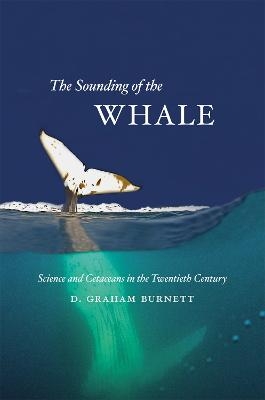
Sounding of the Whale
Science and Cetaceans in the Twentieth Century
Seiten
2012
University of Chicago Press (Verlag)
978-0-226-08130-4 (ISBN)
University of Chicago Press (Verlag)
978-0-226-08130-4 (ISBN)
- Titel ist leider vergriffen;
keine Neuauflage - Artikel merken
From the trials of Job to the legends of Sinbad, whales have breached in the human imagination as looming figures of terror, power, confusion, and mystery. This book tells a story of how science, politics, and simple human wonder intertwined to transform the way we see these behemoths from below.
From the Bible's "Canst thou raise leviathan with a hook?" to Captain Ahab's "From Hell's heart I stab at thee!," from the trials of Job to the legends of Sinbad, whales have breached in the human imagination as looming figures of terror, power, confusion, and mystery. In the twentieth century, however, our understanding of and relationship to these superlatives of creation underwent some astonishing changes, and with "The Sounding of the Whale", D. Graham Burnett tells the fascinating story of the transformation of cetaceans from grotesque monsters, useful only as wallowing kegs of fat and fertilizer, to playful friends of humanity, bellwethers of environmental devastation, and, finally, totems of the counter-culture in the Age of Aquarius. When Burnett opens his story, ignorance reigns: even Nature was misclassifying whales at the turn of the century, and the only biological study of the species was happening in gruesome Arctic slaughter-houses.
But in the aftermath of World War I, an international effort to bring rational regulations to the whaling industry led to an explosion of global research-regulations that, while well-meaning, were quashed, or widely flouted, by whaling nations, the first shot in a battle that continues to this day. The book closes with a look at the remarkable shift in public attitudes toward whales that began in the 1960s, as environmental concerns and new discoveries about whale behavior combined to make whales an object of sentimental concern and public adulation. A sweeping history, grounded in nearly a decade of research, "The Sounding of the Whale" tells a remarkable story of how science, politics, and simple human wonder intertwined to transform the way we see these behemoths from below.
From the Bible's "Canst thou raise leviathan with a hook?" to Captain Ahab's "From Hell's heart I stab at thee!," from the trials of Job to the legends of Sinbad, whales have breached in the human imagination as looming figures of terror, power, confusion, and mystery. In the twentieth century, however, our understanding of and relationship to these superlatives of creation underwent some astonishing changes, and with "The Sounding of the Whale", D. Graham Burnett tells the fascinating story of the transformation of cetaceans from grotesque monsters, useful only as wallowing kegs of fat and fertilizer, to playful friends of humanity, bellwethers of environmental devastation, and, finally, totems of the counter-culture in the Age of Aquarius. When Burnett opens his story, ignorance reigns: even Nature was misclassifying whales at the turn of the century, and the only biological study of the species was happening in gruesome Arctic slaughter-houses.
But in the aftermath of World War I, an international effort to bring rational regulations to the whaling industry led to an explosion of global research-regulations that, while well-meaning, were quashed, or widely flouted, by whaling nations, the first shot in a battle that continues to this day. The book closes with a look at the remarkable shift in public attitudes toward whales that began in the 1960s, as environmental concerns and new discoveries about whale behavior combined to make whales an object of sentimental concern and public adulation. A sweeping history, grounded in nearly a decade of research, "The Sounding of the Whale" tells a remarkable story of how science, politics, and simple human wonder intertwined to transform the way we see these behemoths from below.
D. Graham Burnett is professor of history and history of science at Princeton University. He is an editor at Cabinet magazine, as well as the author of four books, including A Trial by Jury, Trying Leviathan, and Masters of All They Surveyed, the last published by the University of Chicago Press.
| Zusatzinfo | 16 colour plates, 86 halftones, 18 line drawings |
|---|---|
| Sprache | englisch |
| Maße | 152 x 229 mm |
| Themenwelt | Sachbuch/Ratgeber ► Natur / Technik ► Naturführer |
| Geschichte ► Allgemeine Geschichte ► Neuzeit (bis 1918) | |
| Naturwissenschaften ► Biologie ► Limnologie / Meeresbiologie | |
| Naturwissenschaften ► Biologie ► Zoologie | |
| ISBN-10 | 0-226-08130-3 / 0226081303 |
| ISBN-13 | 978-0-226-08130-4 / 9780226081304 |
| Zustand | Neuware |
| Haben Sie eine Frage zum Produkt? |
Mehr entdecken
aus dem Bereich
aus dem Bereich
Europa 1848/49 und der Kampf für eine neue Welt
Buch | Hardcover (2023)
DVA (Verlag)
CHF 67,20
Giordano Bruno - ein ketzerisches Leben
Buch | Hardcover (2024)
C.H.Beck (Verlag)
CHF 41,85


